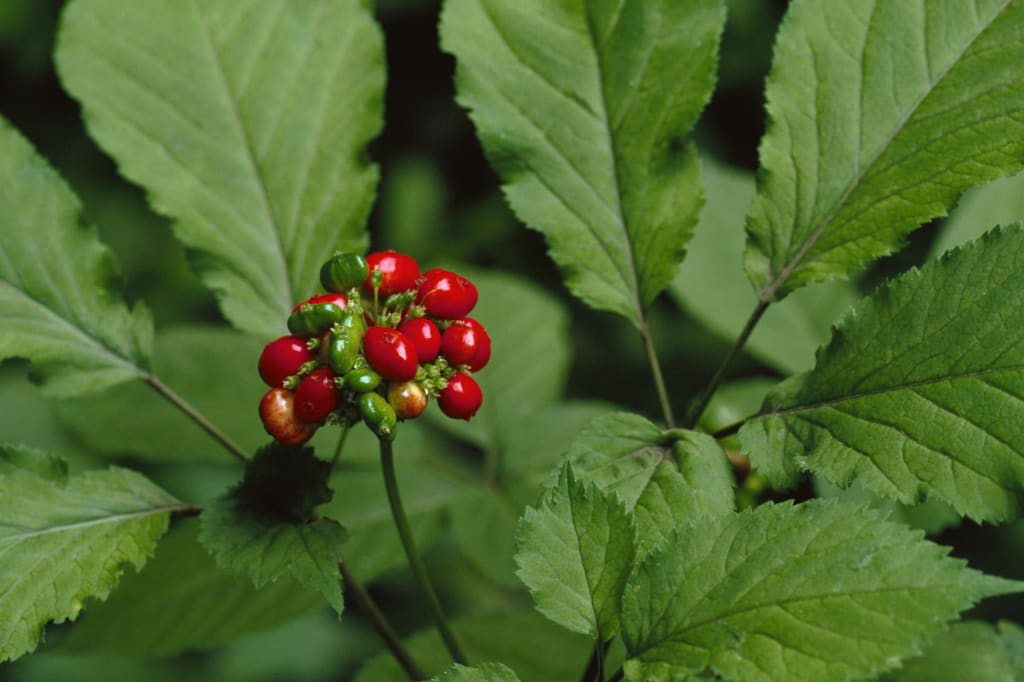Garden Shed Adventures
Anise, Chamomile, Bay Leaf, Ginseng

Walking through the meadows and viewing all the plant life is a beauty to see. I grew up in the country and had the natural wonders all around me; it shaped my life and gave me insight into providing for oneself. The accomplishment of growing your own resources is great and I am looking forward to planting my own garden with the joy it denotes. Here are some favorites.
Star Anise, dry fruits of the star anise tree, Illicium verum, used as a spice and source of pharmaceutical chemicals. The plant is indigenous to the southeastern part of China and to Vietnam. The flavor and uses of the fruit are similar to those of Pimpinella anisum. The aromatic essential oil is commonly used for flavoring candies, liqueurs, and perfumes. In the pharmaceutical industry star anise is a major source for shikimic acid, which is used in the synthesis of an anti-influenza drug. Medicinally a tea is made from star anise and used to treat respiratory infection, nausea, constipation and other digestive issues.
Bay leaf, also called laurel leaf, leaf of the sweet bay tree, Laurus nobilis, an evergreen of the family Lauraceae. It is indigenous to countries bordering the Mediterranean. A popular spice used in pickling and margination and to flavor stews, stuffing’s, and fish. Bay leaves a delicately fragrant but have a bitter taste. They contain approximately 2 percent essential oil, the principal component of which is cineloe. The smooth and lustrous dried bay leaves are usually used whole and then removed from the dish after prepared. Bay leaves medicinal treatments include, being and anti-inflammatory and antidiabetic activity, and is used for the improvement of the immune system. Antioxidants such as vitamin C, vitamin E, and carotenoids.
Chamomile a delicious tea is the common name for many daisy looking plants of the family Asteraceae. Chamomile has green feathery leaves that are alternately arranged on the stem. Two of the species, Matricaria recutita and Anthemis nobilis, are common tea infusions. In the US it is common to use as a relief for anxiety and promotes relaxation. In Europe it has been used for wound healing and to reduce swelling and inflammation. The chamomile plant is susceptible to may fungi and insects and is loved by aphids and moths. Chamomile for the skin (topical) may be used to treat skin irritation from radiation cancer treatments. Also Chamomile in capsule form may be used to control vomiting during chemotherapy. A useful herb to make your infusions with!
Ginseng is the root of plants in the genus Panax, a medicinal herb for thousands of years. The root is a light color, long stock and green leaves that are oval shaped. Example are Korean Ginseg (Panax ginseng), South China ginseng (Panax notoginseg), and American ginseng (Panax quinquefolius). These roots are characterized by ginsenosides and gintonin. It is an antioxidant and anti-inflammatory. It also helps with boosting immune system, improves brain function, relieves fatigue and has benefits that fight cancer. Another use is that it fights flu symptoms. It is also available in stores as a tea and it’s on the spice rack to flavor you favorite stir fry. Look for next time you at shopping it is a multi-use full root.
Hop, also called hop plant, either of two species the genus Humulus, a nonwoody annual or perennial vines in the hemp family, Cannabinaceae. It is native to temperate North America, Eurasia and South America. Hops is used in the brewing industry are the dried female flower clusters, cones of the common hop, H. lupulus. The Japanese hop, H. japonicas is a quick growing annual species used a screening vine. Hops have been used for brewing purpose for 1200 years or more. The brewing value of the cones is based on their content of bitter resins and essential oils. Medicinally hops is used for anxiety, insomnia, restlessness, tension, nervousness and irritability.
The great thing about gardening is the variety and absolute pleasure from harvesting your own plants. I feel a sense of accomplishment each time and love that it was a learned trait from my family. There are people all over the globe tending to the earth and reaping the rewards of patience in their gardens and greenhouses.
About the Creator
Lady Sherry-Anne Dow Podolchuk
Grew up in Canada with a very loving family and studied in business and science and I have always loved writing. I hope you enjoy my stories.






Comments
There are no comments for this story
Be the first to respond and start the conversation.